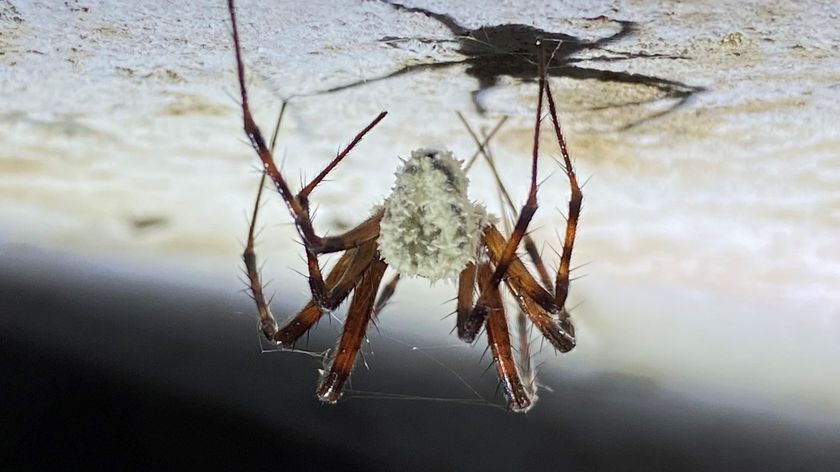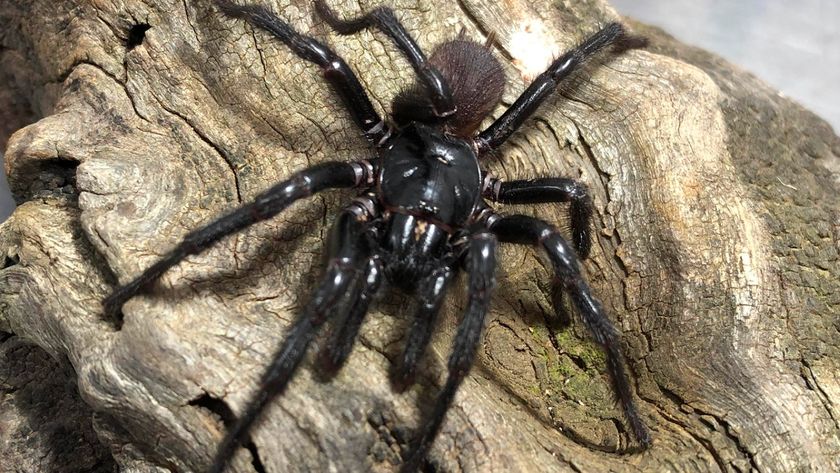Jewel-Colored Flies Spell Death for Baby Spiders
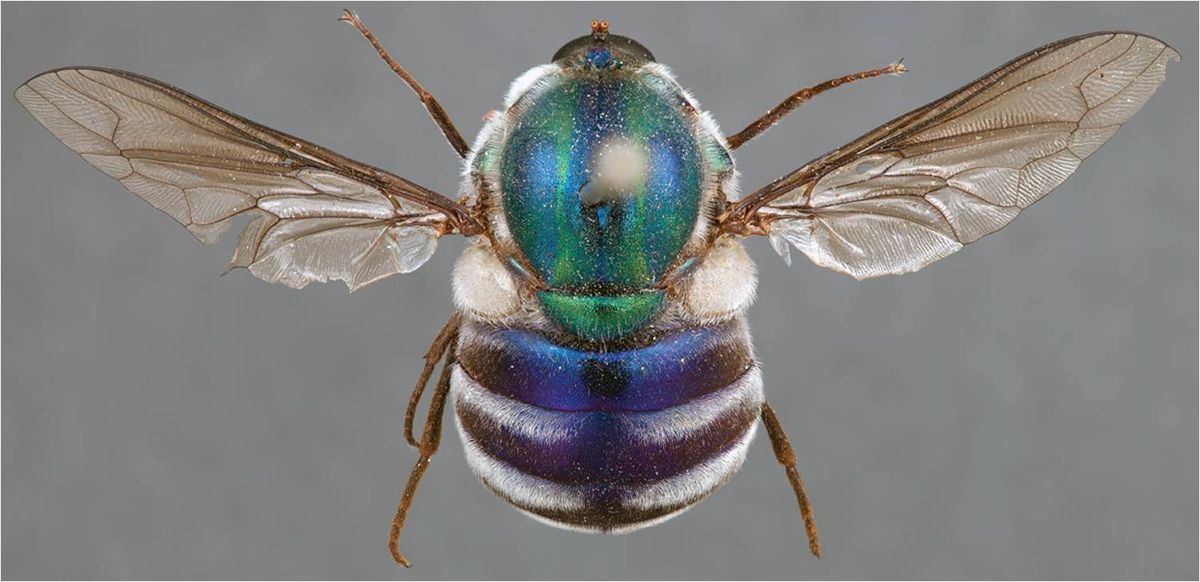
Baby spiders beware: Researchers have just described four new types of spider flies, whose larvae infect the bloodstream of juvenile spiders.
A paper published March 1 in the journal Zookeys catalogs the huge variety of spider flies in Australasia, including four genera whose larvae specialize in parasitizing spiders like tarantulas, trap door spiders and funnel web spiders. Genera are a scientific classing of organisms that includes species; these ones belong to the subfamily Panopinae and live in the area of the world that includes Asia, Australia, New Guinea and Indonesia.
"It’s a very charismatic group and very interesting, but it's very rarely collected and hadn't been worked on in many years," study researcher Shaun Winterton, of the California Department of Food & Agriculture, told LiveScience. "We wanted to make the knowledge we had available to the scientific community."
Winterton also discovered four new species of Panops from Australia. They are P. aurum and P. danielsi, which have large eyes and golden manes, and P. jade and P. schlingeri, which have a greenish-blue sheen and whitish hairs around their heads. The flies' metallic coloration gives them their jewel-like appearance. [Images of Jewel-Colored Spider Flies]
Spiders beware
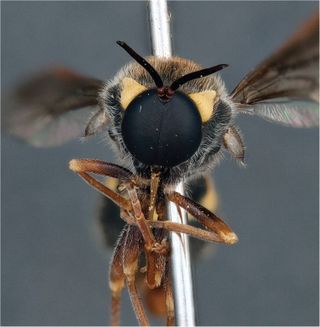
All species in Panops have larvae that become parasites inside Australian spiders. The adult sprays its eggs in places traversed by juvenile spiders. When the larvae emerge, they wait for a spider to pass, then climb aboard one of its legs. When the spider starts moving, the spider-fly larvae sneak into the spider's bloodstream.
"They specialize in big spiders like tarantulas. Those spiders can live for years at a time," Winterton said. "When they have the maggot inside the spider, it actually extends the spider's life; they can live like that for up to 10 years."
Sign up for the Live Science daily newsletter now
Get the world’s most fascinating discoveries delivered straight to your inbox.
Eventually, however, the spider-fly maggot will eat the spider from the inside out, leaving behind only the exoskeleton, then will wrap itself in the spider's web and develop into an adult in about a week to 10 days.
Flying jewels
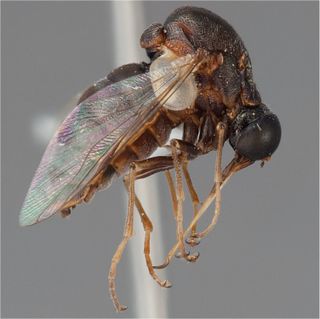
These adult spider flies are not all bad news; they're important pollinators of flowers.
In some species of Panops, the mouthparts are greatly elongated to allow the owner to feed at flowers with nectar at the base of long corolla tubes. Others have very oddly shaped bodies that resemble the creature in the 1979 movie "Alien."
Others have bright iridescent colorations, perhaps to mimic bees. Still others are covered in hairs that all point forward, and when you look at their faces, they almost look like snowmen or big fuzzy bumblebees. "It changes color to a beautiful white, fuzzy beast," Winterton said.
As for his favorite spider fly, that's an easy question: "Panops jade," Winterton told LiveScience. "I named it after my daughter, Jade."
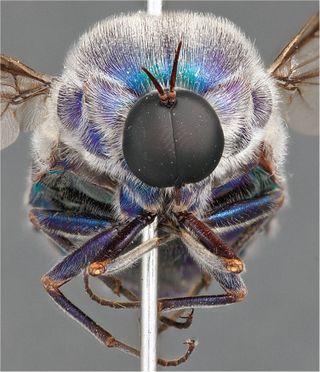
You can follow LiveScience staff writer Jennifer Welsh on Twitter @microbelover. Follow LiveScience for the latest in science news and discoveries on Twitter @livescience and on Facebook.
Jennifer Welsh is a Connecticut-based science writer and editor and a regular contributor to Live Science. She also has several years of bench work in cancer research and anti-viral drug discovery under her belt. She has previously written for Science News, VerywellHealth, The Scientist, Discover Magazine, WIRED Science, and Business Insider.

